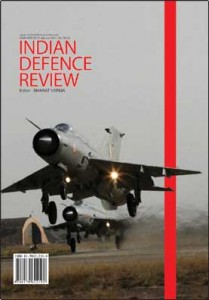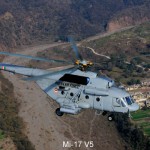The Air War : Simply stated the air war is about destroying/defuntionalising selected targets. As has been summed up so succinctly – “Air power is targeting and targeting is Intelligence”. That is the targets must be clearly defined, their location known and preferably fixed, their size large enough for acquisition by pilot or concerned sensor system and their characteristics vulnerable to weapons delivered from air.
Many early air power prophets and theorist also considered enemy ‘WILL’ as a target for air power. If and when the WILL is chosen as a target, the route to defeating the ‘WILL’ is indirect. It is the result of physical destruction or threat of destruction of certain selected targets. The bombing of centre of Rotterdam on 14 May 40 by Luftwaffe is one historical example to prove the above point which forced Belgium to capitulate. More recent is the case of Milosevic in Serbia in 1999.
For a pilot in a fast moving jet, it is nearly impossible to distinguish friendly tank from hostile tank, even if identification SOPs have been devised. Fratricidal casualties in 1991 Gulf War were close to 35 percent of the total.
Fixed or static targets, once detected are easily attacked. On the other hand mobile targets cannot be easily attacked due to their mobility and generally small size. First of all small mobile targets are extremely difficult to acquire visually by a pilot. Secondly, even after visual acquisition, hitting a small moving target is still in its infancy. It will remain so for many years for almost all the Air Forces. “Whatever the merits of the target imagery produced by spy satellites and unmanned aerial vehicles, without the support of a ground observer’s ‘eyes on target’ air power can still be singularly ineffective in reducing an enemy’s ground combat power if not his will.”10
The Land War
Land War basically deals with destroying hostile army first. Traditionally, in normal conditions, attacker requires a ‘three to one’ superiority over the defender for success. This ratio increases in difficult terrain and conditions. In hills and mountains it may go up to ‘ten to one’.
Opposing armies seldom have such disparity in numbers. But it is by clever manoeuvre and deception that attacker hopes to create the desired numerical superiority at the point of his choosing. Napolean perfected the art of manoeuvre combined with deception and was its most leading practitioner. And not yet surpassed by any other General since. Hence the series of spectacular victories of Napoleon’s France.
The movement of large body of troops and equipment is monitarable, with increasing transparency in modern battlespace. So how does then the attacking Commander create the numerical superiority at his chosen place of attack?
What does this reveal to us about land warfare? That till the very last moment an army commander cannot decide his exact place of attack. His likely avenue of attack is subject to many factors. The terrain has major bearing on avenues of attack; so does the required logistics build up and subsequent support. What one Commander can analyse, the same is also analysable by the opposing Commander. This allows the defender to plan his defences. The movement of large body of troops and equipment is monitarable, with increasing transparency in modern battlespace. So how does then the attacking Commander create the numerical superiority at his chosen place of attack? Naturally through subterfuge, and deception right till the last moment and adapting to opposing Commander’s defensive plans. That is till the last moment it is difficult for the land Commander to firm up his plan of attack.
This poses a dilemma for joint planning between the army and the air force. The air war mandates firming up of plans as early as possible. To be able to decide on targets and, thereafter, gather intelligence on the target, i.e. very precise intelligence to match the highly accurate PGMs, requires a lot of lead-time. Lead time is precisely what the army commander cannot give with respect to his plans. So, then, how can the two plan jointly? If the joint planning lacks thoroughness the execution definitely will be sub-optimal.
The Way Out
If both the army and air commanders understand this dilemma and agree to adapt, then thoroughness in joint planning leading to smooth joint execution is possible. The following factors therefore must be kept in mind:
| Editor’s Pick |
By Army Planners. An airman can plan best against following:
- Static and large targets;
- Targets with precise and updated intelligence.
- An orchestrated attack plan (to take care of enemy fighters and ground based anti-aircraft weapons) requires a lead-time of 48 to 72 hours. Reacting at shorter notice will be sub optimal especially when adequate command of air has not been obtained both against hostile fighters and ground based anti aircraft weapons.
- Mobile targets destruction probability remains low because it can continue to change its location till the last moment. This is not like to change in near future. This is true of small elusive mobile targets and not the massed armour in open.
- Most of the mobile targets within the tactical battle area, like tanks, APCs, artillery guns, mortars and troops appear very small to the pilot in a fast moving jet. They are most difficult to acquire visually from 4-6 Km distance due to limitations of the human eye. Yet to attack a tank safely, it must be picked up by the pilot from a distance of 4-6 Kms. At that distance a tank subtends a very small arc indiscernible to the average human eye. Moreover, if these targets are camouflaged, then the chances of missing them are far more than the chances of hitting.
Tanks are mobile, but once committed in a battle are of no use to any other formation, at least for quite a while, whereas strike aircraft after delivering devastating firepower in few sorties can be easily switched to another formation in few hours.
- It is easier to pick up tanks when they are moving by their tell tale signs like dust plume. So ask air strikes in a dynamic situation.
- For a pilot in a fast moving jet, it is nearly impossible to distinguish friendly tank from hostile tank, even if identification SOPs have been devised. Fratricidal casualties in 1991 Gulf War were close to 35 percent of the total. In spite of many technological solutions, fratricide fear is one of the main worries in USA.
- To support the land battle, there are many other associated support systems like ammo dumps, trucks, refuellers, Vehicle Waiting Areas, roads and railway lines and bridges which a pilot finds easier to acquire and attack. Also, these have lesser lethal air defenses, and most are stationary.
- To engage mobile targets in real time requires phenomenal amount of resources in terms of sensors to detect and on-call orbiting aircraft to attack. The pay-off is just not worth it unless there are no other targets and tasks whatsoever for the air force.
- Air resources are far too few for the increasing number of tasks. So they cannot be blindly allotted formation wise. Moreover, the flexibility of air power and increasingly rapid communications make it possible to control air power centrally while looking after needs at many fronts.
- Centralised planning and decentralised execution is the principal for air power utilisation. Therefore, to allot air effort to individual formations as a SOP militates against the above principal. Moreover, human nature seldom permits any commander to forego his allotment (air effort or any other effort) to a needier Commander. For two reasons, first, the commander will not know in real time the needs of others who may need air effort in larger amount. Second the commander will always find some justification to use the allotted effort. Only the commander in overall picture of a theatre can prioritise the needs of various commanders under him and direct the air effort to appropriate place. And of course he can switch the entire effort to large distance, upto 400-800 Kms within a matter of hours. He can direct the use of armament, from PGMs to others, as per need, in real time. Some historical examples are listed below in proof.
In Gulf War-91, Marines seldom permitted Marine Harriers to be used elsewhere even during the 38 days of pure air war. The Commander of VII Corps General Fred Franks Jr, remained convinced that JFACC, Gen Charles Horner was not giving VII Corps adequate air support.11 This inspite of the CENTCOM C in C Gen SchwarzKopf, an army General, directing the entire war and having hourly contact with Charles Horner. During 1971 Indo-Pak War, on the Western front, HQ 11 and HQ 1 Corps continuing to utilise allotted air effort, even in the absence of worthwhile targets. This was even when at Chammb an adverse situation had begun to assume alarming proportion.12 And in 15 Corp, 26 Div, 162 Inf Bde, where even without demanding air strikes, the Corp HQ was pushing Hunter sorties with rather late intimation to Brigade HQ. As a result the air effort went waste.





